The Mystery Bike
It was in a shoddy state. Unridden for a long time, I’d guess for more than twenty years. The tyres were flat, the rear derailleur was locked up with thick dirt; the chain was off; the Stronglight headset was rusty and so loose that the whole bike rattled; the handlebar tape was musty and dry like some ancient scroll; the brakes were seized and all the cables were twisted and brittle like some old wire fencing in a field; the crank was a muck fest and as for the pedals, well, let’s just say they were rust buckets. Similarly, the gold frame had tried to stave off the abuse of oxidation, but it had lost some paint in areas so the bare metal underneath was showing, and the forks had suffered acutely from the years of neglect. The picture above really doesn’t do justice to the damage that the years of rain and damp had done to this fine specimen of a bike.
Sport 2000?
I bought this bike from a grumpy old French lady in a village outside Lille. The bike was advertised as a “Belleri”, and this really caught my interest. I knew of Belleri’s good quality handlebars and stems, but a Belleri bike? That sounded interesting. However, I quickly realised, on seeing it dragged out of a barn, that it wasn’t a Belleri bike at all and the lady could provide no information besides the asking price. There were no decals on the bike, except for a headbadge reading “Bernard Kryzo Sport 2000”. This is a shop in France that no longer sells bikes, but fashionable clothes and shoes.
What Lies Beneath
Yet underneath all the dirt and grease, the weathering and layers of dust, lay a good quality bike: Simplex LJ / Super Competition derailleurs, Mavic Module rims laced to Maillard 700 Professional hubs, a Stronglight TS crankset, Lyotard 45CA pedals, Mafac brakes and a nice original leather saddle. This was a mid-range bike when new, comparable to a Motobecane C3 ( or 1970’s Grand Jubilee in the US ).
Restoring it
Some surface rust can be removed. Indeed, it’s surprising how much can be cleaned and brushed off with care. But then there is the black stuff that ruins chrome and the deadly, deep brown coloured rust that can only be removed by sandblasting. Unfortunately, quite a bit of the rust on this frame had now penetrated deeper into the tubes , and I could only clean and try and restore some shine to the gold paint with some wax polish. Nevertheless, it was a nice moment when uncovering the remnants of a decal which had been hidden under the pump clamp on the seat tube. As I cleaned away the dirt, a “Vitus 172” badge revealed itself to me. I felt like Howard Carter in his Egyptian tomb at that point, uncovering some ancient artefact under decades of dust. I could also see a tiny remnant of the same badge on the forks, revealing that the whole bike was made of high quality Vitus tubing.
Still a Mystery, still a Beautiful Bike
The components cleaned up pretty well, though it took hours of work. Everything need a three stage clean; soaking, brushing and then polishing, but I realised the bike was really going to come back to life. I did replace a few parts, the Lyotard pedals were savaged by rust so I installed SIFEM ones of the same era. I also replaced the front and rear derailleur with a Simplex Competition and a Huret Eco respectively. After fitting new cables, handlebar tape, a newer chain and new housing, the whole bike looked reborn and really pretty. Amazingly, the original Wolber tyres and tubes held air and actually sprang to life, that was a big surprise! But sadly, the Mavic hubs never awoke from their dull grey slumber, they will never shine like they once did, but the Maillard hubs recovered quite well so the wheelset has some good life in it yet.
What is it?
It’s a beautiful bike, and I imagine when it was new it would have been a real head-turner. I get the impression it had white details, which would have been the colour of the handlebar tape, toe straps and cable housing. I was tempted to restore it to this colour combination, but I think for that to really work I would have had to replace the black saddle. As for its identity, I did some research and found that the head badge is really a sticker of the shop that originally sold the bike, not the bike’s maker. It is now a ski shop and no longer sells bikes. I sent them a picture of this bike and asked them for any thoughts, but they never responded. I believe it is either a Motobecane, a Peugeot, perhaps a Bertin, or even a Mercier. The Simplex derailleurs were date stamped “1978” so that solves its age. Whatever it is, it weighs only 21 lbs and rides beautifully, and best of all, it now looks fantastic.


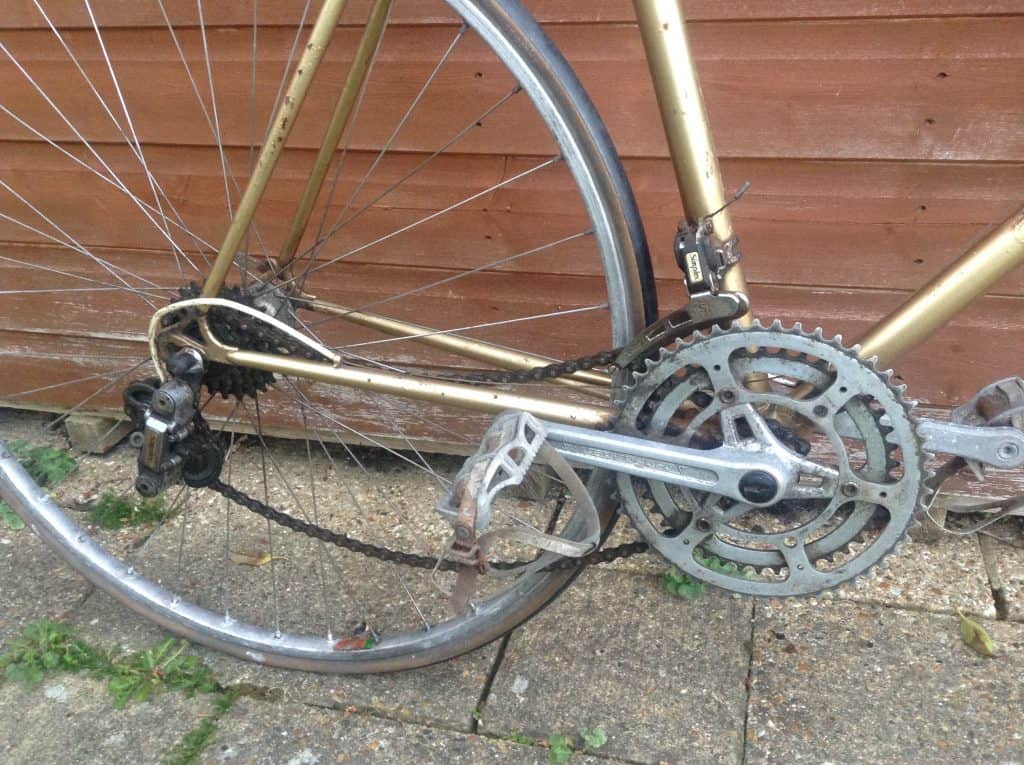
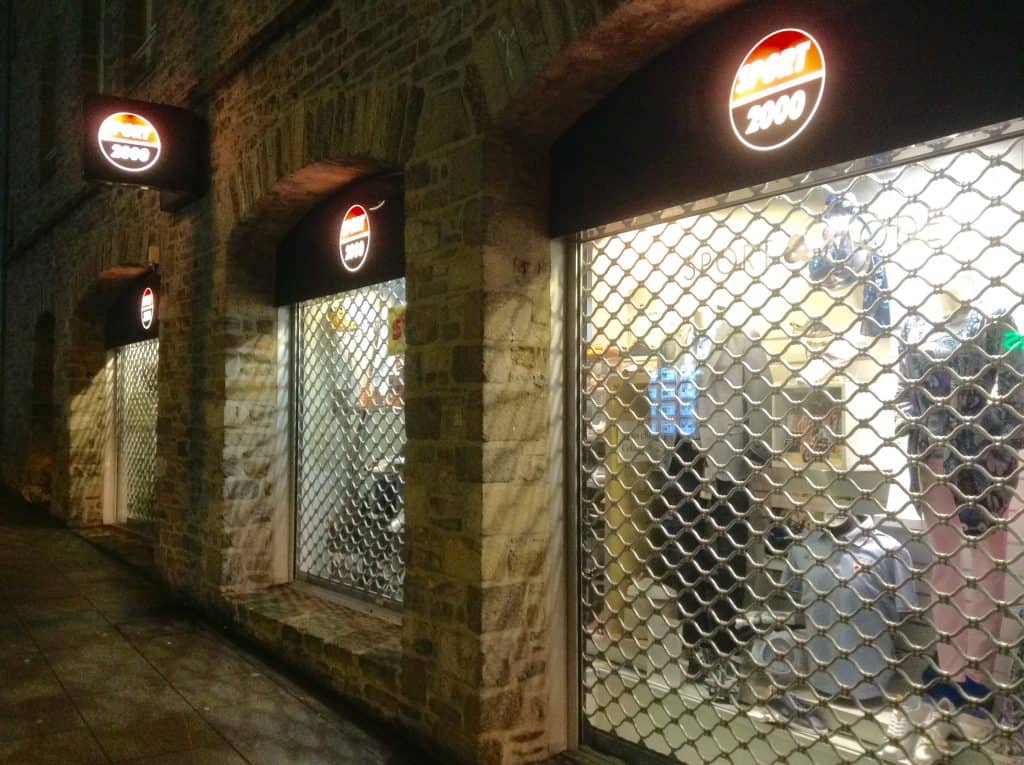
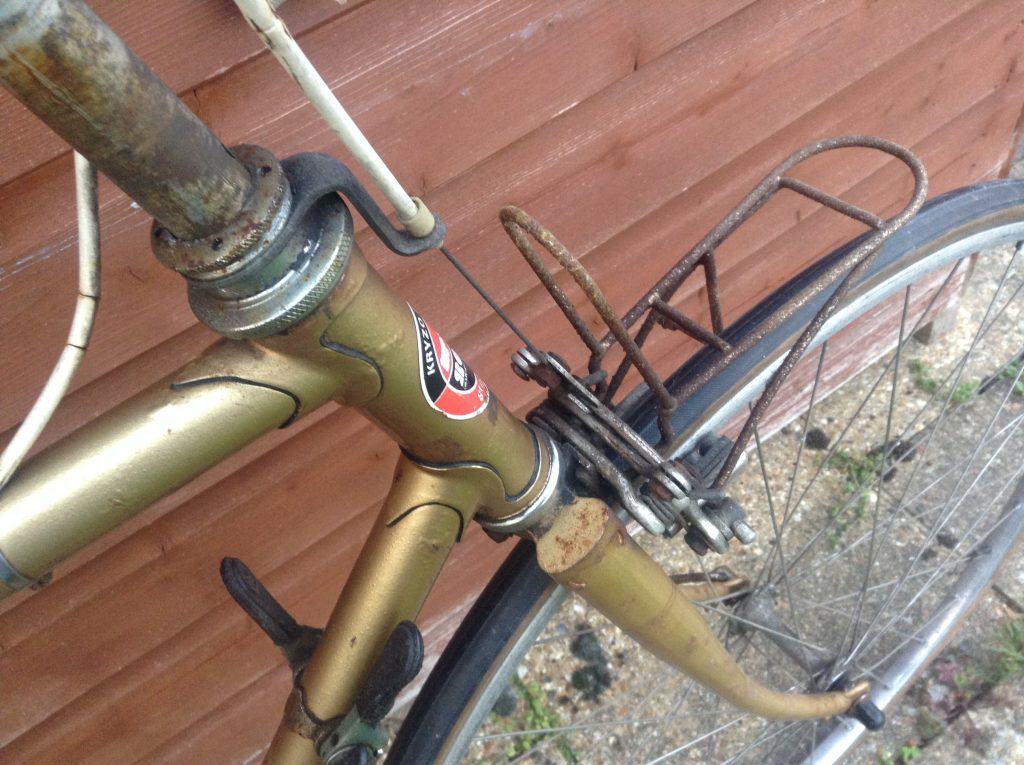
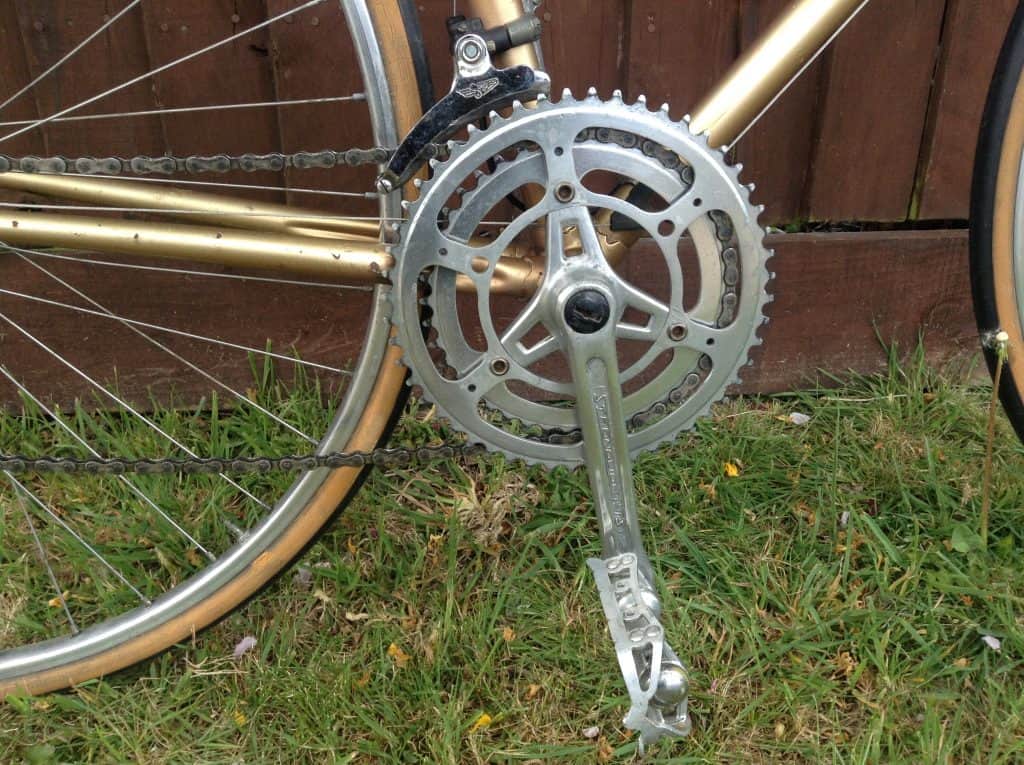
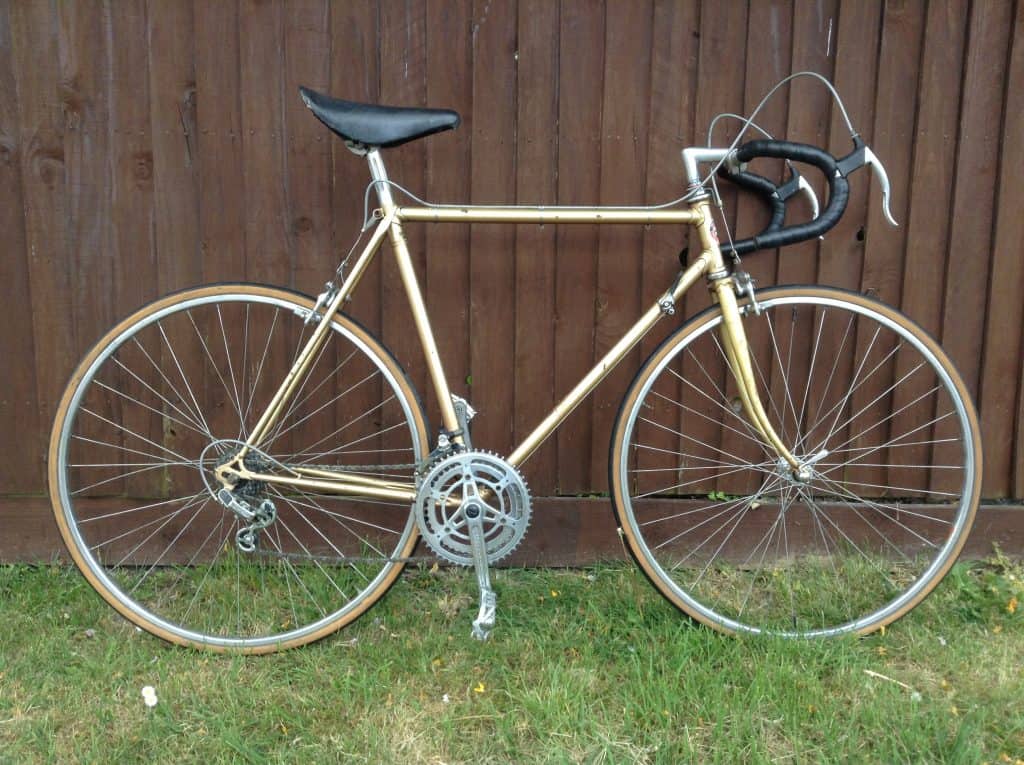
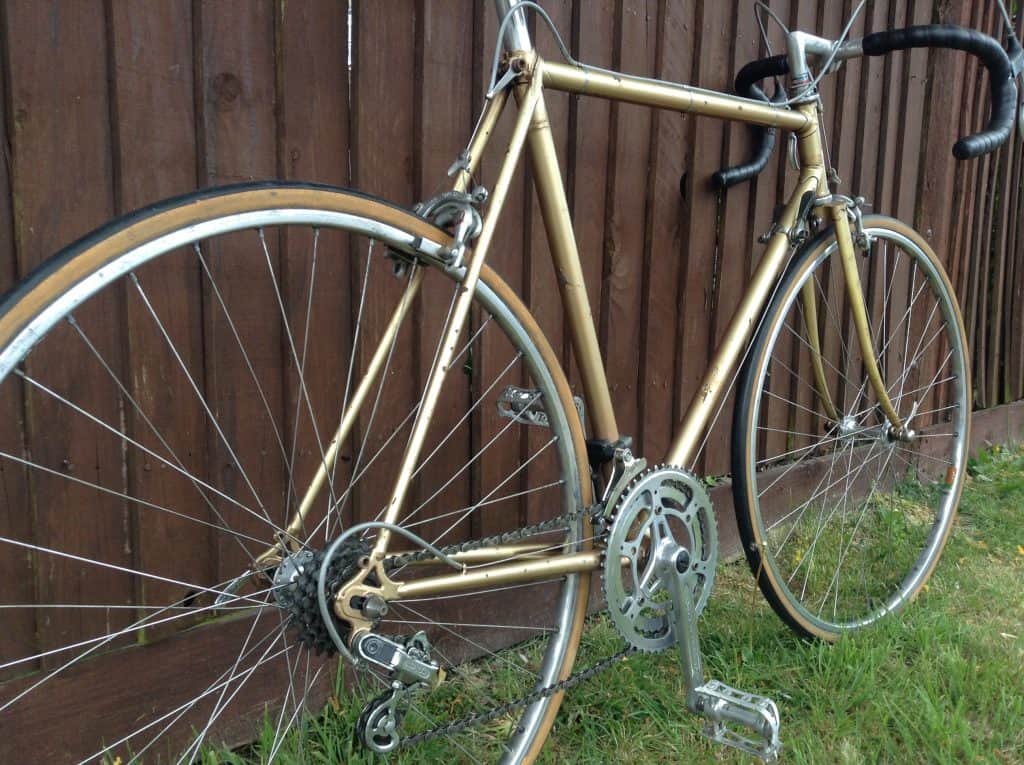
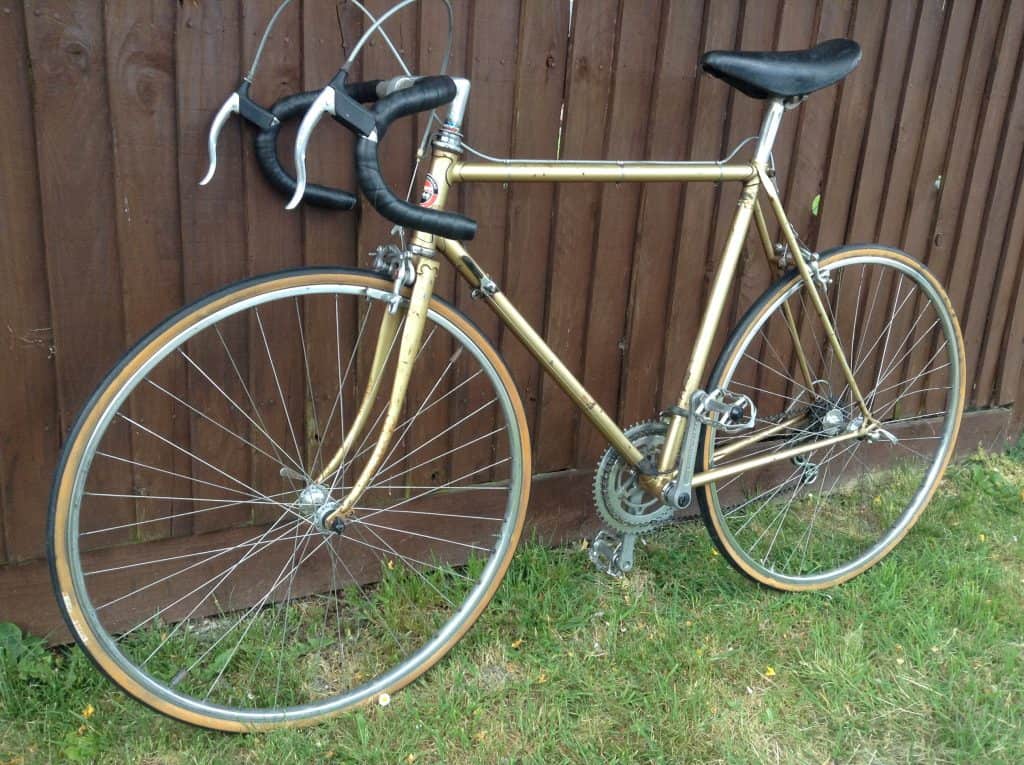
Any numbers stamped under the BB or on the dropouts?
The forks seem reminiscent of Mercier, but there would also be a branding on the tops of the rear stays.
I’d date it around 1979.
Good work, by the way!
There are no serial numbers anywhere on this frame, and though it does look like it could be a Mercier, it doesn’t have stamped fork crowns like many of that marque. I wonder if it could be a Bertin C34, like this one:
https://bertinclassiccycles.files.wordpress.com/2009/01/gold-bertin.jpg?w=593
I have one like this: https://www.flickr.com/photos/kickmypan/16968249879/in/album-72157651560491580/
Yours looks the same